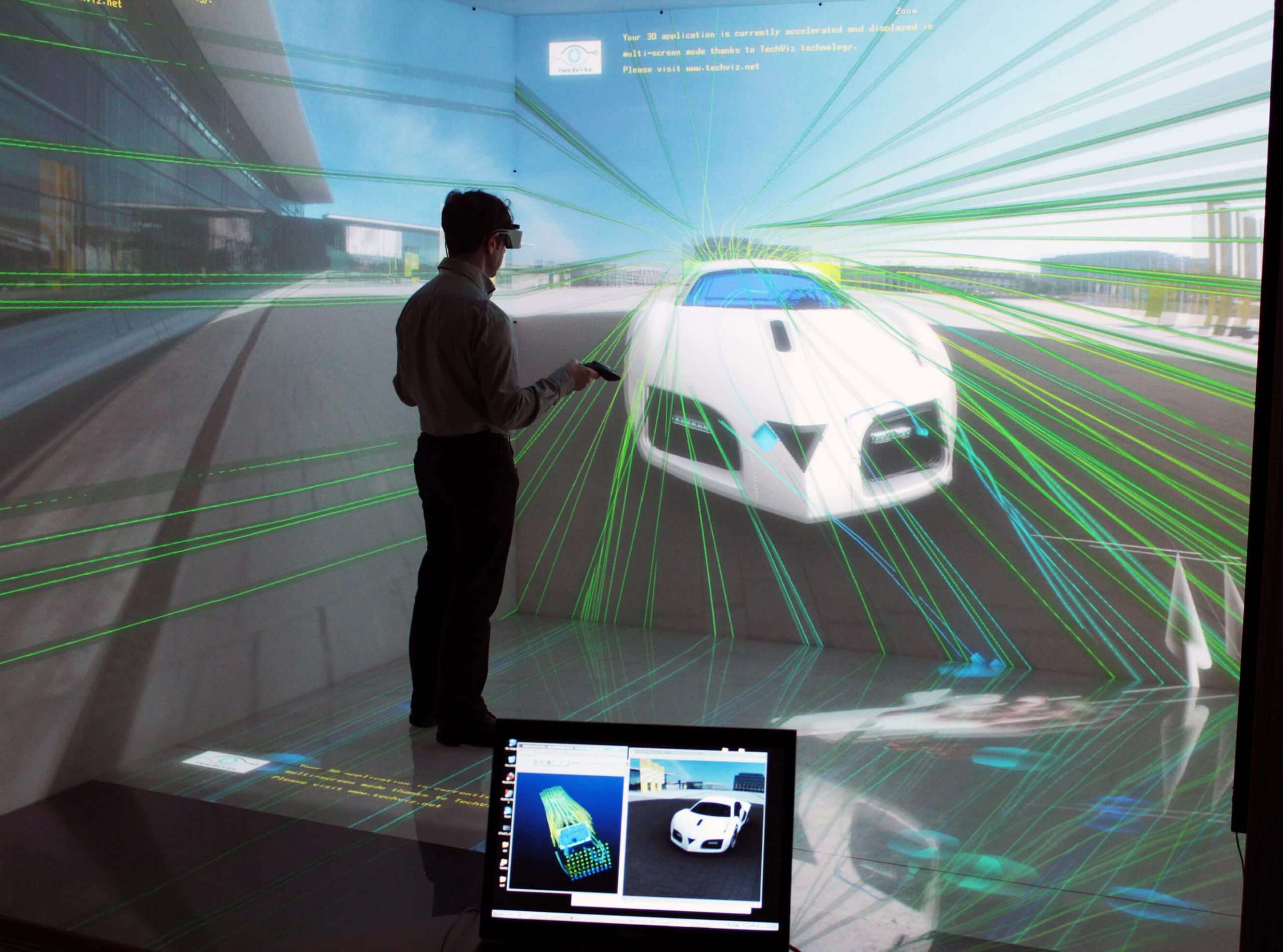Virtual reality (VR) is continuing to make inroads into automotive design as a practical tool for car designers.
VR is already contributing significantly to the development of the infrastructure that supports autonomous vehicles, but it also has a major part to play in automotive design.
This is happening earlier in the design process, as designers are discovering the versatility of VR applications when it comes to conceptualising ideas and transforming them into workable prototypes and models.
ST Engineering Antycip supports the automotive industry with dedicated VR tools and platforms to support breakthroughs in car design.
How Can You Use VR to Design Cars?
VR applications for automotive and transport design include virtual prototyping and the use of simulation technology. For car designers, these, and other, VR applications are transforming the way they design cars.
3D methods enable designers to create highly realistic details and integrate them into prototypes much earlier in the entire process. This is very much operating on a human scale – it brings the designer much closer to the finished item, even when this item doesn’t yet exist in this form in the real world.
What this does is to support a more empathic approach to automotive design, where the designer, even when sketching out concepts, can experience what the driver or passenger would.
How VR Supports Core Design Principles
The Design Council talks about four key principles in design activity:
- Empathy
- Iteration
- Collaboration
- Visualisation
VR supports all of these when applied to the automotive industry.
First, empathy is an essential quality of good design. It's about understanding what the end-user will experience.
Using VR, car designers can position themselves inside their designs, even as they put together ideas in their early forms. This is due to the immersive, 3D capabilities of VR.
Rather than relying on 2D sketches and CAD concepts, the designer can render designs in actual size, expressed in 3D. This provides much greater clarity about how a design might translate in to real-world use.
Secondly, iteration, the testing of ideas by trial and error, becomes far more efficient, and less wasteful, through VR. Virtual prototyping removes limitations in the design and review process and reduces development costs.
Thirdly, and closely connected to this greater creative freedom, is the improved opportunities for collaboration that VR offers.
Rendering designs and prototypes at actual size, in 3D, helps remove barriers to explaining concepts and bridges gaps between design and engineering functions in car design. Plus, advanced tools such as immersive VR CAVE environments promote real-time group collaboration.
Finally, there is the essential visual aspect of design. As the Design Council points out, visualisation helps make complex information more comprehensible and supports decision-making.
VR takes visualisation further, rendering it in realistic forms that enhances this fundamental aspect of design.
21st Century Car Design
There are newsworthy examples of how VR is rapidly setting new standards for car design.
The Ford Motor Company is using 3D rendering to aid in the design of motorsport vehicles. Here, VR is used conceptually, with designers using headsets and controllers instead of sketch pads and CAD. The company has taken VR’s involvement in car design further and also designed a vehicle using VR entirely.
However, beyond the headline news, the benefits that VR offers car designers are substantial and long-term. VR is set to become intrinsic to initial design phases through to prototyping, product launch and production.
As with other industries, the pandemic has accelerated the use of digital and virtual technologies in car design to drive efficiency and make remote working a more practical, realistic option.
VR is also enabling car manufacturers like Ford to improve the whole product development process, streamlining it and helping it move seamlessly through its crucial milestones.
And it plays an increasingly vital role in product marketing too, enabling prospective buyers to see new car designs from all angles, and to experience them from the inside, as if they were driving them. All this before the car has left the assembly line or reached a showroom.
ST Engineering Antycip and the Automotive Industry
ST Engineering Antycip offers collaborative and versatile VR tools for automotive and transport design. Using VR prototyping and immersive scenarios, you can walk through designs and engineering features, reviewing them forensically.
VR allows you to predict product performance and spot potential problems much earlier on in the design process. Save money, time, and resources while streamlining your design capability.
For more information, contact us.




















